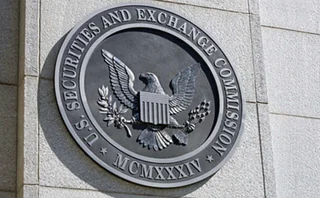
Bad timing for Basel II
The Basel II regulations on capital adequacy came into effect on January 1 this year. Although they were intended to produce more flexible and refined methods of calculating capital requirements, some are pessimistic about how the new rules will affect financial markets.
Under Basel II, capital requirements vary according to the assessed risk of the assets held - this means that, as the economy worsens, assets become more risky and capital requirements go up, even though the worsening economy will also make raising capital more difficult. However, a European regulator said Basel II might not necessarily lead to a worsening of bad economic situations if banks have taken prudent steps to prepare for these periods.
“In additional to institutions keeping aside a minimum level of capital according to the regulations, they should maintain a cushion of capital on top of this to weather bad economic situations. These additional buffers are based on banks' long-run data and their internal judgement of risk,” added a spokesperson from the regulator.
Under Pillar I of Basel II, banks need to assess the risk on their portfolio of assets. If banks have their own risk assessment modelling, the amount they need to hold is dependent on the feedback from their internal models. If banks do not have these models, they have to take the standardised approach, which means the amount of capital they need to hold is determined by external credit ratings provided by ratings agencies.
“The standardised approach in the regulatory system is highly dependent on rating agencies,” Penn says.
Ratings firms provide independent opinions on the probability of a security or debt instrument defaulting. Some of them have said they should not have been placed in this situation, saying this was not the original purpose of their role within financial markets.
“It was never the intention or desire of ratings agencies, such as Standard & Poor’s, to be part of Basel II regulation. Our role is to provide independent research and opinions on the credit worthiness of assets and companies, not to be a part of financial regulation,” said Martin Winn, a spokesperson for Standard & Poor’s in London.
Basel II was created to deal with the inconveniences in Basel I, such as the flat 8% capital requirement for all financial institutions - which had the consequence of banks having to hold unnecessary amounts of money aside when their assets were safe. One regulator observed the new set of regulations had little choice but to use credit ratings to categorise levels of risk under the standardised approach.
“Using ratings agencies' opinions in the standardised approach of Pillar I of Basel II is an improvement over Basel I; there is no other benchmark out there for achieving risk differentiation for different securities,” said the regulator.
See also:
Regulators in Accord
Basel II backlash
Berating agencies
Only users who have a paid subscription or are part of a corporate subscription are able to print or copy content.
To access these options, along with all other subscription benefits, please contact info@risk.net or view our subscription options here: http://subscriptions.risk.net/subscribe
You are currently unable to print this content. Please contact info@risk.net to find out more.
You are currently unable to copy this content. Please contact info@risk.net to find out more.
Copyright Infopro Digital Limited. All rights reserved.
As outlined in our terms and conditions, https://www.infopro-digital.com/terms-and-conditions/subscriptions/ (point 2.4), printing is limited to a single copy.
If you would like to purchase additional rights please email info@risk.net
Copyright Infopro Digital Limited. All rights reserved.
You may share this content using our article tools. As outlined in our terms and conditions, https://www.infopro-digital.com/terms-and-conditions/subscriptions/ (clause 2.4), an Authorised User may only make one copy of the materials for their own personal use. You must also comply with the restrictions in clause 2.5.
If you would like to purchase additional rights please email info@risk.net
More on Regulation
CFTC acting chair: ‘We don’t need a Dodd-Frank for crypto’
US regulator wants real-time market surveillance; focuses on rise of liquidity risk
Large banks safer for CCPs than they get credit for
Plentiful pre-positioned liquidity softens the blow of resolution, new research argues
Basel uniformity fades as members defy dress code
Rule-makers diverge from Basel III standards, denting aims of comparability and fuelling fears over fair competition
Fate of US Treasury clearing deadline to be decided at crunch meeting
Isda chief predicts delay as clearing houses await confirmation of go-live dates
Value-at-risk models face neglect due to FRTB uncertainty
Some banks delaying material upgrades until timeline to replace VAR becomes clearer
CRR III hangs in the balance as member states push for changes
Top EU lawmaker rejects calls to water down capital rules, while others see room for manoeuvre
Looming US Basel endgame redraft sparks calls to save IRB
Experts say 20 years of data makes credit risk models more appropriate than standardised approach
Cool heads must guide financial regulation of climate risk
Supervisors can’t simply rely on ‘magical thinking’ of market discipline, says Sergio Scandizzo







